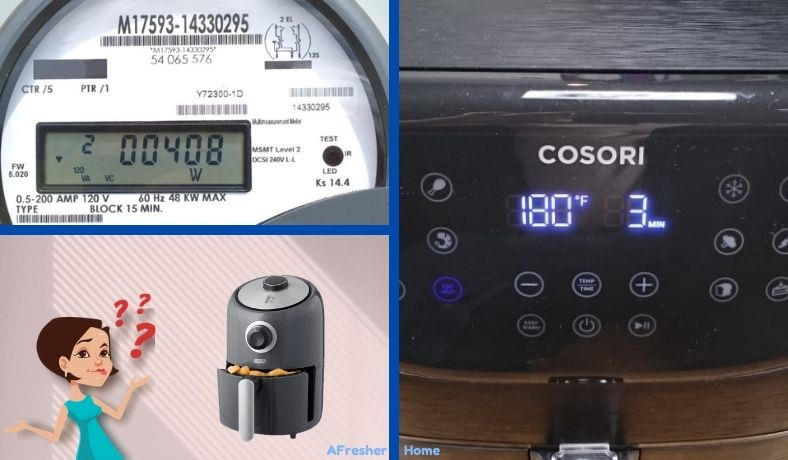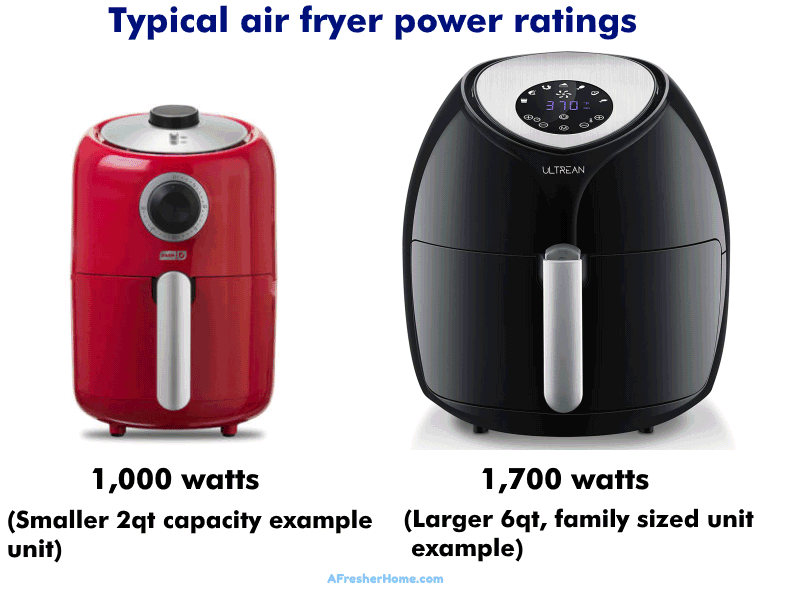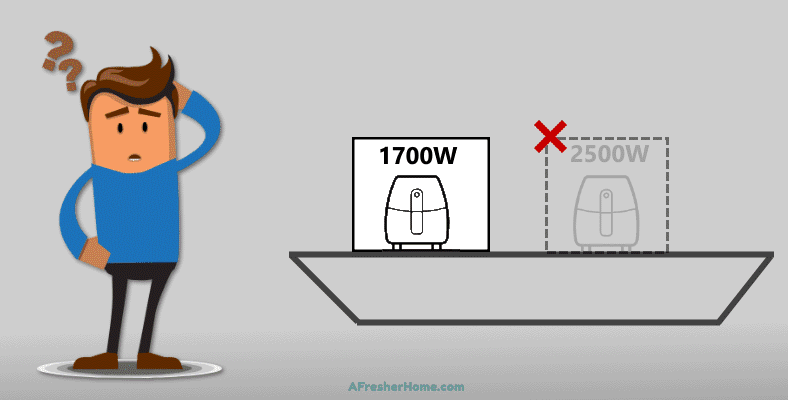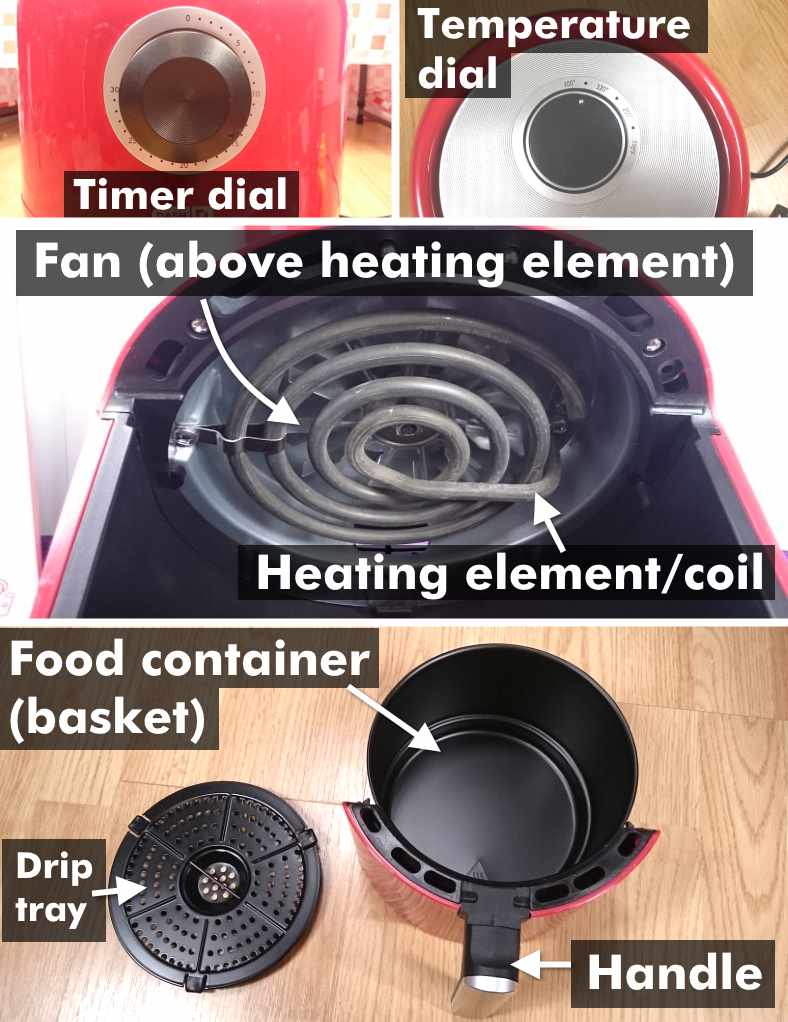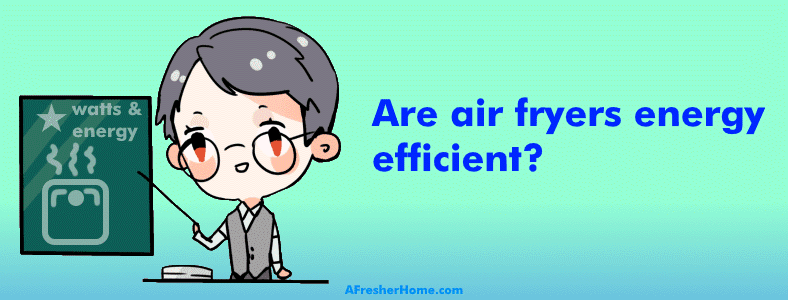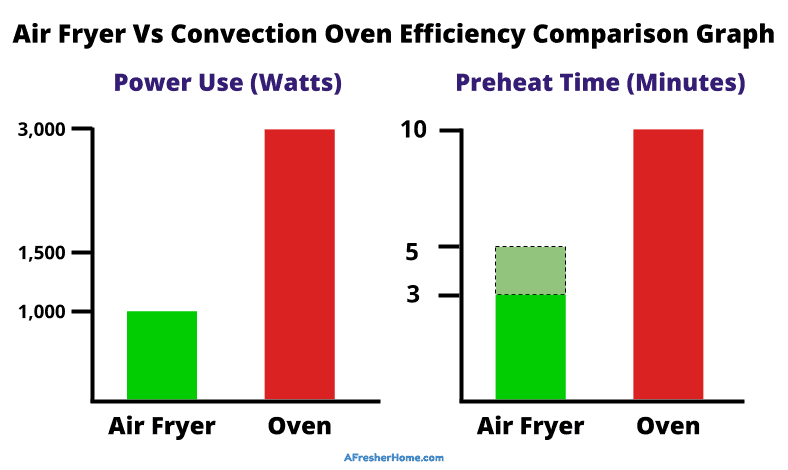Do air fryers save on electric bills? And how much electricity does an air fryer use?
I’ll cover this and much more, too:
- How much electricity and power (wattage, amps, and more) typical air fryers use
- Air fryer vs oven electricity usage facts
- How an air fryer works
- The best wattage when buying an air fryer
Read on to see all the great facts inside!
Contents
How much electricity does an air fryer use?
Typical Air fryers, like the ones shown here, are nearly always one of several standard power use ratings based on their size & food cooking capacity. Small units tend to be 1,000W while larger ones tend to most often be 1,700W.
The good news is that air fryers tend to be one of just a few electricity use ratings which is usually based on their size and food cooking capacity.
For example, an average air fryer uses:
- Smaller models with a smaller capacity (1.2-2 quarts): about 1,000-1,200 watts typically.
- Larger units (3.4-6 quart capacity): 1,700 watts in many cases.
There are several reasons why, with the most important being that it takes more heat and therefore more electricity is needed to cook more food.
That’s especially true for frozen meats like chicken wings or steak.
Why can’t you buy an air fryer above 1,700 or 1,800 watts?
That’s because in the United States and some other countries that use 110V home power, the electrical circuits in the home are limited to supporting only about 1,800 watts maximum.
The electrical code followed in the construction of homes and buildings specifies that electrical outlets, circuit breakers, and wiring are rated for this.
Essentially, it’s for safety purposes. Let’s say you tried using an appliance of 2,00o watts. When attempting to draw full power (2,000 watts) the circuit breaker would trip, shutting down power to the outlet to prevent an overload condition.
How many amps does an air fryer use?
Thanks to Ohm’s law, a basic formula for calculating power based on voltage and current, we can get an approximate number for how many amps different air fryers draw.
Note that American appliances use 110V while some other countries use 220V, so I’ll include both here in a handy chart.
| Air Fryer Watts | Amps (110V) | Amps (220V) |
|---|---|---|
| 1,000W | 9.1 | 4.55 |
| 1,200W | 10.9 | 5.45 |
| 1,700W | 15.5 | 7.73 |
| 1,800W | 16.4 | 8.18 |
These are approximate amps ratings, so they’re pretty close to what you’d measure with a Kill-A-Watt meter or test meter, for example.
As you can see, a typical higher-power 1,700W air fryer uses a bit over 15 amps while a smaller unit uses about 9 amps.
How an air fryer works
Illustrated diagram showing how an air fryer works and the main sections inside. Air fryers share a lot in common with traditional ovens which have a convection baking design. Food in an air fryer’s cooking basket is exposed to hot air forced onto it using a fan.
Air fryers don’t actually “fry” food. Hot air is forced onto the food in a way much like a convection oven.
Hot air is created by turning the electricity supplied into heat using a heating element. The hot air is blown over the food and moves, cooking the outside to crisp it as well as cooking the food internally.
Because they can cook food well and also crisp the outside similar to how a grease or shortening fryer works, they were given the name “air fryer”. It’s also because they’re more appealing if they’re seen as a healthy alternative to oil fryers.
A huge advantage of air fryers is that they do not need cooking oil that saturates the food as frying does.
The basic parts in an air fryer
Air fryers come in a variety of styles but all have the same basic design: A heating element creates an intense source of hot air which is blown across the food using an electric fan. That’s how a convection oven works, but usually, with much more space it needs to heat.
Additionally, much like a traditional oven, they also have cooking time and temperature controls.
Air fryers have a few basic sections which may vary slightly depending on the brand or mode
- A food container (also called a basket) in which food is placed. These normally have a nonstick coating and a slotted bottom (or a slotted tray that fits inside) to allow fat and other residues to fall to the bottom & away from food.
- A drip tray or basket bottom section where melted fat, water, crumbs, and other residue collects. After cooking this is easy to separate from the food section for easy cleaning. These have a nonstick surface also.
- Electric heating element (electric eye). These are usually a smaller version of what you see in a standard oven.
- Electric fan. Place over or below the heating element, these force hot cooking air over the food.
- Temperature and cooking time controls. Standard (dial) models are electromechanical. Digital models offer push button controls and presets; these use more complicated electronics than more basic models.
Other models have additional features, but the basic way they all work is essentially identical regardless of how fancy it may or may not be.
Are air fryers energy efficient?
When we talk about appliances being “energy efficient”, usually we’re referring to how much work they get done or how much less energy they use than others.
In the case of air fryers, it’s important to remember that they’re essentially like little convection ovens. It takes a lot of electricity for a typical oven to cook food. Likewise, an air fryer also uses a lot – when compared to other appliances like a small microwave oven, for example.
To simplify, air fryers aren’t energy efficient in the strictest sense. They use 1,000W or more in most cases to cook food.
However, relative to large ovens which use 2 to 3 times that amount of electricity, yes they are more efficient. That being said, while there are other ways to do things like bake or toast bread, or cook food, air fryers typically deliver better results than other alternative ways of cooking that use less energy.
For example, I could use a small 900W microwave oven to reheat pizza. However, the results aren’t nearly as good as what an air fryer can give me!
Air fryer vs oven electricity usage
This graph compares the energy used by a typical air fryer vs a typical convection oven. Air fryers use much less electricity and also have a faster preheat time (about 3 to 5 minutes). Additionally, they use a lower maximum temperature than ovens. There’s much less air to heat since they’re smaller, making them great for saving energy & hassle.
An air fryer is very similar to a convection oven, with a few differences.
Here are some that stand out:
- Convection ovens have a higher maximum temperature (450-500°F). Air fryers use a lower maximum temperature (typically 400°F). [Note: This does depend on the model, but seems to be the case usually]
- You’ll normally cook food in an air fryer with a lower temperature than in an oven ( 350°F-370°F for example).
- Air fryers, thanks to their size & cooking efficiency, use less electricity. Average models use about 1,000 to 1,700 watts. Ovens, however, often have a power rating of 2,500-3,500 watts.
- It takes roughly half the time (or less) for an air fryer to reach its full preheat temperature. Convection ovens/traditional ovens often take around 10 minutes because they have a great deal more air volume and more surfaces to heat inside.
- Air fryers include a cooking container (food basket) which ovens don’t.
- Food cooked in an air fryer is cooked by much more intense heat as the heating element is very close to the food.
Additionally, air fryers with digital controls usually provide preset buttons that make cooking the most common foods easier than ovens.
The main energy benefits of air fryers vs ovens
Basically, air fryers:
- Take less time to preheat, therefore use less energy during that time.
- Uses less electricity when cooking for roughly the same amount of time as an oven.
The end result is that you’ll use somewhere around 1/2 to 1/3 of the energy required by an oven if you use an air fryer instead. It’s also faster in many cases, I might add!
The drawback of course is that air fryers can’t do large batches of food like cookies, meal prepping, cooking very large meats, and some other common tasks.
They’re ideal for meals, snacks, and standard serving sizes for individuals, couples, and families.
What’s the best wattage for air fryer cooking and when shopping?
“What’s the best wattage air fryer?” – that’s a bit of a vague question, actually. It comes down to several things:
- How much food you’ll be cooking (more power = better & faster cooking, while small portions need less power).
- The types of food you’ll usually cook.
- If you need faster cooking.
For small portions and servings for 1-2 people, a 1,000-watt air fryer is fine. However, for faster cooking, bigger portions, and especially for frozen thick foods like chicken wings, beef, and more I recommend a 1,700 watt model.
A higher-power air fryer can cook smaller portions faster if time is more important to you. Additionally, higher wattage air fryers generally have a larger basket for cooking more food as well.
